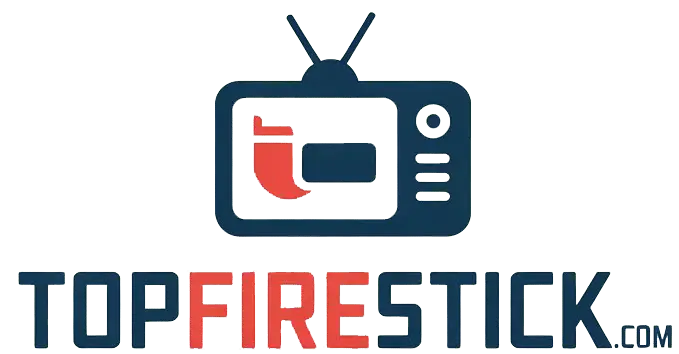Mastering Omnichannel Advertising: A No-Fluff Guide for 2025
Omnichannel isn’t a buzzword anymore — it’s the price of entry.
If you’re still running campaigns in silos (one message on Facebook, another on Google, disconnected emails, random SMS blasts), you’re handing customers straight to your competitors.
In 2025, omnichannel mastery isn’t just about “being everywhere.”
It’s about being connected, synchronized, and smart — everywhere, at once.
Let’s cut through the fluff.
Here’s exactly what mastering omnichannel advertising really means today — and how the best brands are executing it.
Disclaimer: We don’t sell IPTV services. We don’t sell apps. We don’t take commissions.
What we actually do? We test, research, compare, and simplify. We dive into forums, scroll through tech blogs, install all kinds of apps (even the weird ones), and package everything into useful shortcuts you can trust.
We’re just a bunch of nerds obsessed with tech, doing our best to save you time and headaches. Everything we write comes from real testing and experience — no fluff, no hype, no bias.
Use it, test it, question it. We’re not here to sell — we’re here to help.
1. Omnichannel ≠ Multichannel
First things first: Multichannel simply means you’re on multiple platforms.
Omnichannel means those platforms work together, recognizing customers across touchpoints and adjusting messaging based on real behaviors.
| Multichannel | Omnichannel |
|---|---|
| Siloed Facebook, Instagram, Email | Unified experience across all |
| Disconnected messages | Progressive, personalized journeys |
| Metrics per channel only | Metrics across full customer journey |
If your ads, emails, and websites aren’t talking to each other?
You’re not omnichannel — you’re scattered.
📈 According to Salesforce’s State of Marketing 2025 Report, 71% of consumers now expect personalized experiences across every channel — not just isolated brand touchpoints.
2. Building a True Omnichannel Ecosystem
Here’s the anatomy of a properly wired 2025 omnichannel system:
-
Paid Social (Facebook, Instagram, TikTok) ads to attract cold traffic
-
Google Ads and YouTube to intercept search intent
-
Email & SMS Automation to nurture leads intelligently
-
Push Notifications for app engagement
-
Retargeting across all channels based on real-time behavior
-
Personalized Landing Pages that reflect user history
-
Post-purchase Upsells/Referrals driven via Email/SMS/Retargeting
🎯 Sites like TopFirestick.com showcase excellent examples of unified journeys, guiding visitors naturally from content discovery to action across multiple touchpoints.
Everything connected. Everything evolving in real time based on behavior.
3. Data Is the Backbone (First-Party or Die)
In 2025, third-party data is dead weight.
If you’re not building rich first-party datasets through:
-
Website forms
-
Customer accounts
-
Loyalty programs
-
Surveys and quizzes
-
Email/SMS capture
Then you’re flying blind.
Tools like Klaviyo, Customer.io, or Salesforce CDP (Customer Data Platforms) make cross-channel personalization possible at scale.
First-party data lets you:
-
Recognize users instantly across devices
-
Customize offers based on real purchase behavior
-
Predict next actions with AI modeling
4. Creative Consistency Across Channels (Without Being Boring)
Consistency ≠ Copy-paste laziness.
Smart omnichannel creative means:
-
Unified brand voice
-
Adapted formats for each platform
-
Sequential storytelling (not identical repetition)
Example:
-
Facebook Ad: Video teaser of a problem
-
Instagram Story: Quick solution highlight
-
YouTube Ad: Full product demo
-
Email Follow-up: Deep case study
-
SMS: Urgent limited-time discount based on interest
Narrative flows, emotions stack, trust builds — conversion follows.
Real omnichannel success feels natural, not forced. Each touchpoint feels like a conversation, not an interruption.
5. Attribution and Measurement: Don’t Guess, Know
Tracking omnichannel performance requires smarter models than “last click wins.”
You need:
-
Multi-touch attribution (tools like Hyros, Triple Whale, or Google Attribution)
-
Real CAC (Customer Acquisition Cost) tracking across full journeys
-
Retention and LTV (Lifetime Value) models by channel
Old way: “Facebook says my ROAS is 3x. Good enough!”
New way: “Customer saw TikTok ad, Googled product, clicked YouTube review, subscribed to email, bought via SMS retargeting.”
Smart marketers know the real journey — not just the final click.
Real Talk: Omnichannel Winners vs Losers
| Losers | Winners |
|---|---|
| Blast random ads across platforms | Build connected experiences |
| Use cookie-cutter messages everywhere | Personalize based on behavior |
| Track only last-click conversions | Track multi-touch journeys |
| Ignore customer data | Leverage rich first-party data |
| React slowly to customer behavior | Adapt messaging in real time |
In 2025, omnichannel is not a nice-to-have. It’s the battlefield.
Closing Thoughts
Mastering omnichannel advertising isn’t about being everywhere.
It’s about being everywhere intentionally.
When your brand shows up consistently, contextually, and personally — you win.
-
Stop thinking in isolated platforms.
-
Start thinking in customer journeys.
-
Stop obsessing over channel-specific metrics.
-
Start mastering full customer lifecycle value.
Because if you’re not connecting your dots, someone else is — and they’re stealing your market share while you watch.





